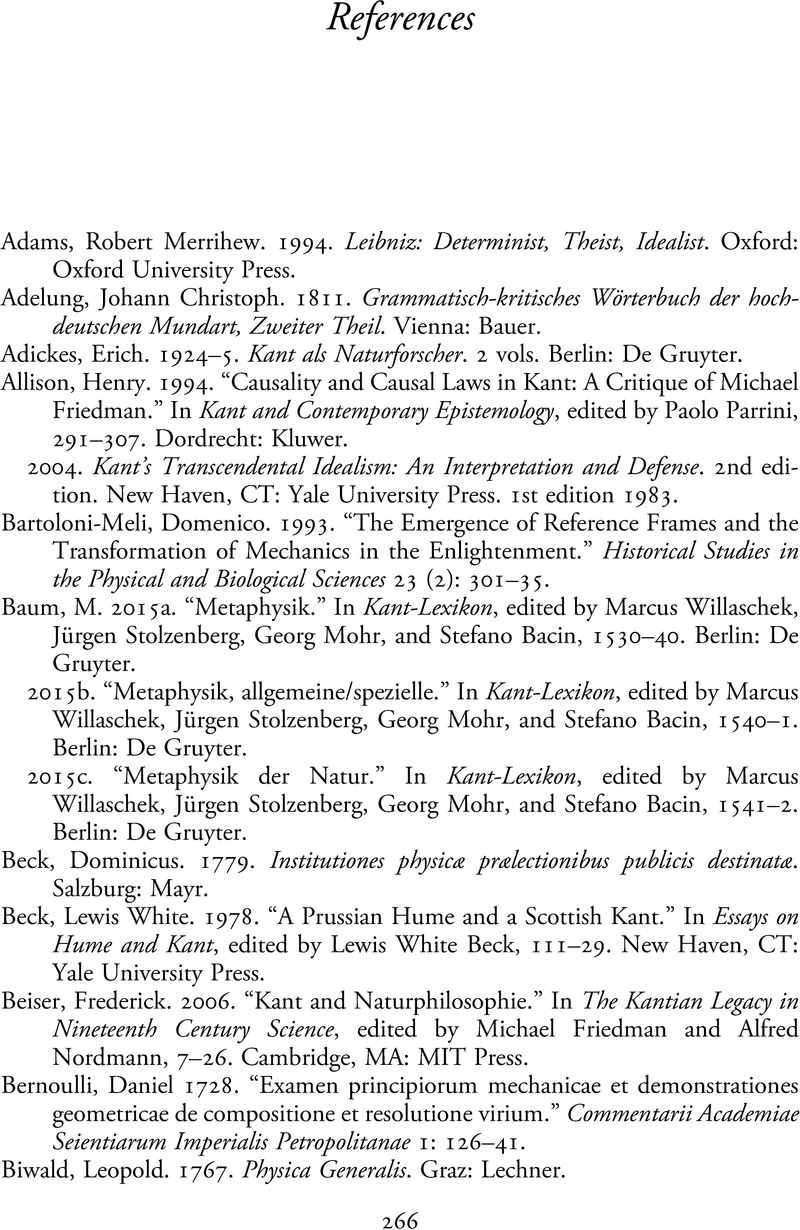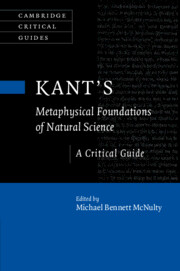Book contents
- Kant’s Metaphysical Foundations of Natural Science
- Cambridge Critical Guides
- Kant’s Metaphysical Foundations of Natural Science
- Copyright page
- Contents
- Figures
- Contributors
- Note on Abbreviations and Translations
- Introduction
- Chapter 1 Kant’s Conception of the Metaphysical Foundations of Natural Science
- Chapter 2 Kant’s Normative Conception of Natural Science
- Chapter 3 The Applicability of Mathematics as a Metaphysical Problem
- Chapter 4 Phoronomy
- Chapter 5 Space, Pure Intuition, and Laws in the Metaphysical Foundations
- Chapter 6 Finitism in the Metaphysical Foundations
- Chapter 7 The Construction of the Concept of Space-Filling
- Chapter 8 Beyond the Metaphysical Foundations of Natural Science
- Chapter 9 How Do We Transform Appearance into Experience?
- Chapter 10 Absolute Space as a Necessary Idea
- Chapter 11 Proper Natural Science and Its Role in the Critical System
- References
- Index
- Cambridge Critical Guides
- References
References
Published online by Cambridge University Press: 22 October 2022
- Kant’s Metaphysical Foundations of Natural Science
- Cambridge Critical Guides
- Kant’s Metaphysical Foundations of Natural Science
- Copyright page
- Contents
- Figures
- Contributors
- Note on Abbreviations and Translations
- Introduction
- Chapter 1 Kant’s Conception of the Metaphysical Foundations of Natural Science
- Chapter 2 Kant’s Normative Conception of Natural Science
- Chapter 3 The Applicability of Mathematics as a Metaphysical Problem
- Chapter 4 Phoronomy
- Chapter 5 Space, Pure Intuition, and Laws in the Metaphysical Foundations
- Chapter 6 Finitism in the Metaphysical Foundations
- Chapter 7 The Construction of the Concept of Space-Filling
- Chapter 8 Beyond the Metaphysical Foundations of Natural Science
- Chapter 9 How Do We Transform Appearance into Experience?
- Chapter 10 Absolute Space as a Necessary Idea
- Chapter 11 Proper Natural Science and Its Role in the Critical System
- References
- Index
- Cambridge Critical Guides
- References
Summary

- Type
- Chapter
- Information
- Kant's Metaphysical Foundations of Natural ScienceA Critical Guide, pp. 266 - 282Publisher: Cambridge University PressPrint publication year: 2022

